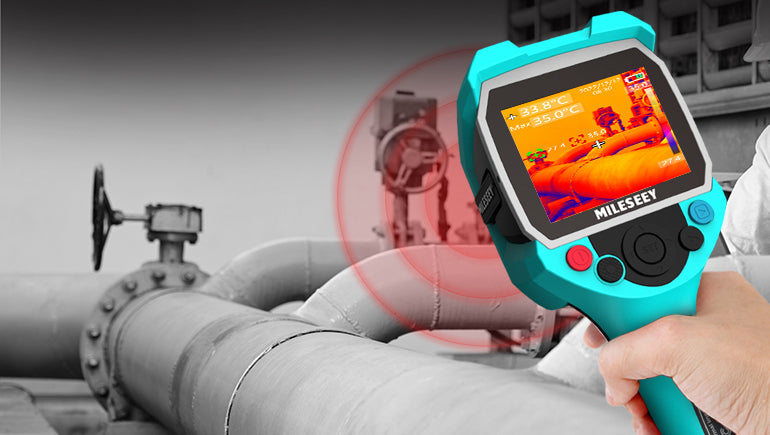Top Water Leak Detection Techniques to Safeguard Your Property from Water Damage
Top Water Leak Detection Techniques to Safeguard Your Property from Water Damage
Blog Article
Cutting-edge Solutions for Early Detection of Water Leakages in Buildings and Facilities
From advanced leak discovery modern technologies to the release of IoT sensors for real-time monitoring, the landscape of leak prevention is developing quickly. Automated water flow evaluation systems are improving exactly how leakages are determined and attended to, leading the means for an aggressive strategy to water leakage discovery.
Advanced Leakage Discovery Technologies
Advanced leakage discovery technologies, outfitted with innovative sensors and formulas, play a vital role in promptly determining and determining water leaks in various settings. Electromagnetic sensing units can determine changes in electro-magnetic fields created by water, providing yet another layer of leak discovery ability.

IoT Sensors for Real-Time Tracking
In the world of modern-day water leak detection, the combination of IoT sensing units for real-time surveillance represents a critical innovation in boosting proactive leak detection abilities. These sensing units offer continuous tracking of water systems, supplying real-time information on water circulation rates, pressure variations, and temperature modifications. By leveraging IoT innovation, these sensing units can identify also the tiniest abnormalities in water use patterns, enabling very early recognition of possible leakages prior to they rise right into significant concerns.
IoT sensing units send information to a central system, where sophisticated algorithms evaluate the info and produce notifies or notifications when irregularities are spotted. This real-time monitoring capability allows homeowner or facility managers to promptly address leakages, lessening water damage, decreasing repair prices, and preserving water sources.
Additionally, IoT sensors can be incorporated with structure administration systems, enabling computerized responses to detected leaks, such as turning off water valves or turning on pumps to alleviate the impact of leaks. Overall, the execution of IoT sensing units for real-time tracking substantially enhances the efficiency and performance of water leak discovery in structures and framework.
Artificial Intelligence Algorithms for Leakage Forecast

One key advantage of making use of artificial intelligence for leak prediction is its capacity to constantly learn and boost its precision in time. As more information is gathered and fed into the formula, it can fine-tune its predictions and adjust to changing problems, ultimately increasing the reliability of leakage detection systems.
In addition, artificial intelligence formulas can help in recognizing subtle address signs of leakages that may go undetected by traditional surveillance techniques. water leak detection. By assessing complicated information collections in real-time, these algorithms can give early cautions and alerts, permitting for prompt treatment and preventive upkeep to mitigate possible water damage and connected prices
Using Thermal Imaging for Leakage Detection
Thermal imaging innovation offers an appealing approach for detecting water leaks in numerous systems and infrastructures. By using infrared radiation and temperature level variances, thermal imaging video cameras can recognize hidden leaks that are not conveniently noticeable to the naked eye. When water leaves from pipelines or frameworks, it often alters the temperature level of the bordering location, producing temperature differentials that thermal cameras can catch. These temperature abnormalities are after that translated into visible pictures, highlighting the specific area of the leakage.
One of the essential advantages of thermal imaging for read review leakage detection is its non-intrusive nature. Unlike conventional techniques that may require burglarizing walls or floorings to situate leakages, thermal imaging permits non-destructive testing. This not just conserves time and lowers prices however likewise lessens interruption to the building or facilities being examined. Furthermore, thermal imaging can rapidly scan huge locations, supplying a detailed summary of potential leakage sources in a timely fashion. Generally, using thermal imaging technology enhances the performance and precision of water leakage discovery, making it a useful tool for keeping the stability of buildings and frameworks.
Automated Water Flow Evaluation Systems
Just how can automatic water circulation analysis systems reinvent the detection and monitoring of leaks in numerous systems and infrastructures? Automated water circulation analysis systems supply a positive strategy to leakage detection by continually monitoring water flow prices and patterns. By establishing standard information, these systems can swiftly recognize inconsistencies that may suggest a leak, allowing punctual intervention to avoid comprehensive damages.
These systems utilize sophisticated formulas to evaluate real-time information and give immediate informs when abnormalities are found, permitting swift action to be taken. In addition, automated water flow analysis systems can be incorporated with structure management systems or IoT platforms, improving total efficiency and enabling remote tracking capacities.
In addition, the information accumulated by these systems can be made use of for anticipating upkeep objectives, aiding to recognize potential powerlessness in the framework prior to leakages happen. Generally, the application of automatic water flow analysis systems can considerably improve leak discovery and monitoring methods, eventually resulting in cost savings, lowered water wastefulness, and boosted sustainability in structures and infrastructure.

Final Thought
In verdict, the integration of advanced leak detection innovations, IoT sensors, artificial intelligence algorithms, thermal imaging, and automatic water flow analysis systems uses ingenious options for very early discovery of water leakages in structures and facilities. These modern technologies make it possible for real-time monitoring, prediction of leaks, and efficient detection approaches to avoid water damages and wastefulness. Applying these remedies can aid in keeping the honesty and sustainability of water supply in different settings.
Report this page